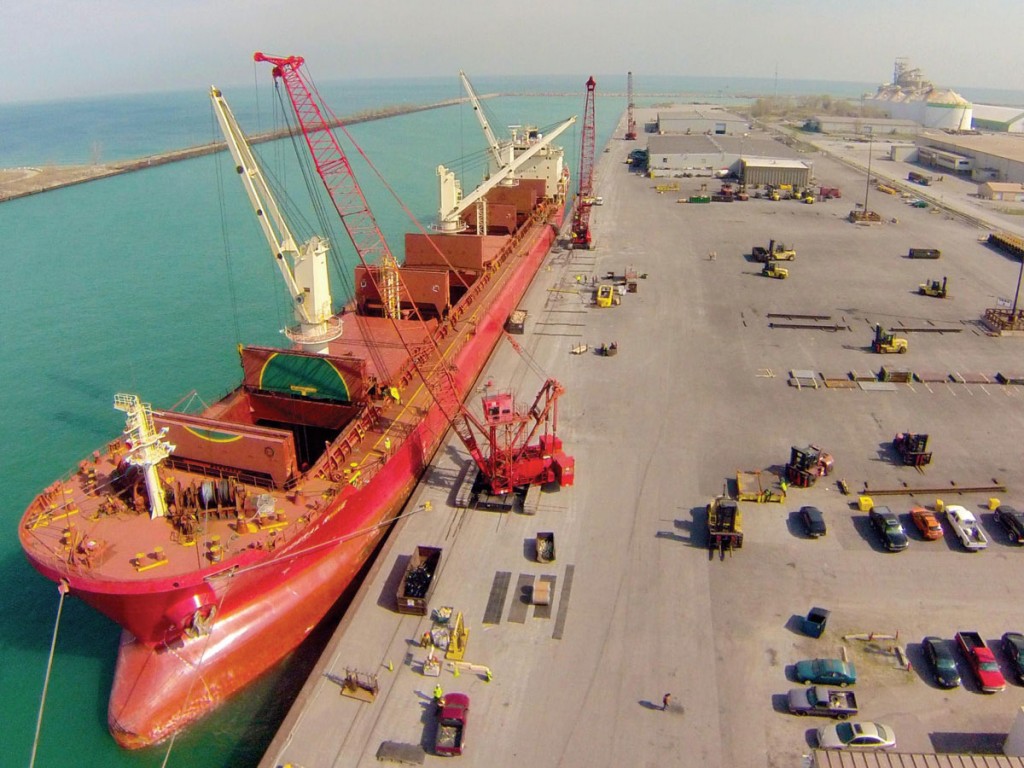This year marks a major milestone for Montreal-based, privately-owned Fednav Limited : the 75th anniversary of its creation in September 1944 by Ernest Pathy, grandfather of current President and CEO Paul Pathy. From a fledgling enterprise initially located at the Great Lakes metropolis of Toronto, it has emerged through the decades as Canada’s largest dry bulk shipowning and chartering group, with a fleet of some 125 vessels serving the Great Lakes/St. Lawrence, Atlantic, Pacific and Arctic trades. And terminal operations under the banner of FMT in Canada and the United States have since 1960 represented an important component of the Fednav group.

In an interview, Tosini described the sector as “a roller coaster industry, with high peaks and low lows.”
“On average,” he went on, “we have 9 operations going fairly well and two that may be struggling, and never the same two. All terminals are subject to changing market conditions.”
Changing Conditions in a Mature Market
As a whole, Tosini said, it is a very mature market. “What we have seen in the last 15 to 20 years is pretty much what we are up against. Bulk and commodities fluctuate according to market conditions. New business, generally speaking, comes from project cargo.”
He said that salt offered a good example of volatility in the bulk market. “Salt can be very silent for two to three years and then suddenly turn to robust for two to three years.”
In the United States, Tosini said, there are different cargoes subject to quotas, and especially the (Trump) tariffs seen on aluminum and steel. “Though the tariffs were eliminated recently, the market needs to get back on track. For instance, a lot of steel slabs cargo in the Great Lakes disappeared this year. This cargo had been beneficial to us in the past couple of years.”
As far as project cargo is concerned, Tosini said: “There is much price shopping by project cargo managers. They factor in the stevedoring costs along with the inland costs. There is also a lot of price shopping by project managers between the Lakes and US East Coast.”
Amongst terminal operators in North America, Federal Marine Terminals has been widely recognized for facilitating efficient trade flows with key markets. With eight regional operations covering 11 ports, FMT is active on the US East Coast, in the Gulf of Mexico, and on the Great Lakes, leveraging its experience in stevedoring, terminal handling and logistics services for all types of cargo. In short, a seamless supply chain in the markets served.
In Canada, FMT operates terminals at the ports of Hamilton and Thorold. The Port of Hamilton was recently merged with the port of Oshawa to become the Hamilton Oshawa Port Authority (HOPA), biggest Canadian port on the Great Lakes.
FMT’s substantial presence in the United States is centered at Albany, Burns Harbor, Eastport, Lake Charles, Milwaukee, Tampa and Port Manatee. It also operates at two private facilities. Originally established in 1960 to complement the freight operations of Fednav, FMT soon began to function as an independent entity within the Fednav group.
The FMT network services breakbulk, bulk, general and project cargo shipments. Commodities handled range from steel and machinery to forest products and containers.
Capital expenditures at opportune times form an integral part of commercial strategy. As a recent example, FMT Port Manatee invested nearly $3.5 million in container-handling equipment, chassis and yard jockeys to accompany one of its major customers in the rapid growth of its weekly container service between Mexico and Florida. At the same time, FMT enlarged its labor force to better meet customer demand.
Also with the wind in its sails is FMT Lake Charles, having recently signed a contract to handle six shipments of rice to Iraq. This cargo represents 160,000 metric tons, or roughly 2.4 million 50 kg bags.
Is FMT considering further expansion of its network that could include the West Coast? Here, Tosini replied: “For the kind of activities we are engaged in and given the size of our company, we believe the opportunities are better for us on the East Coast and the Gulf. But we keep our eyes and ears open on all opportunities.”





